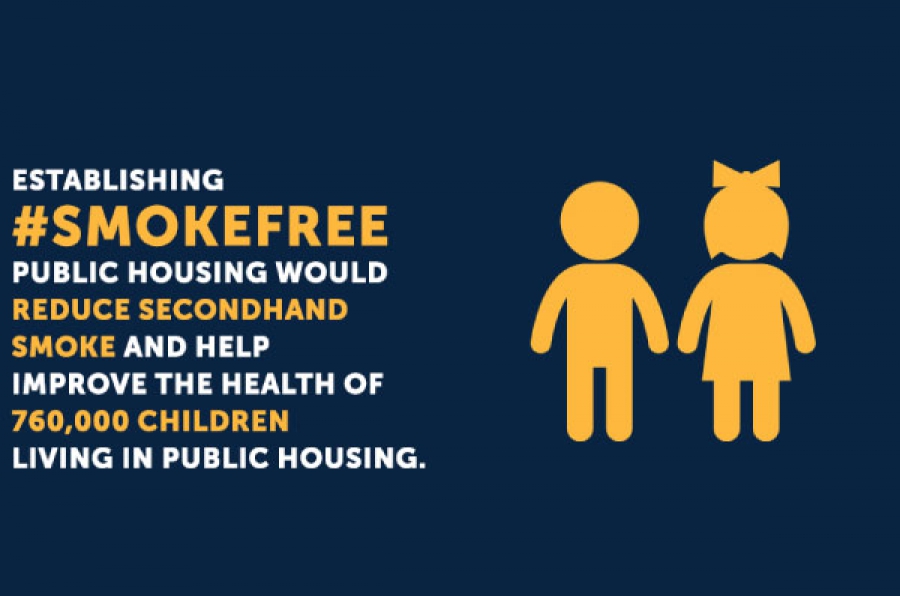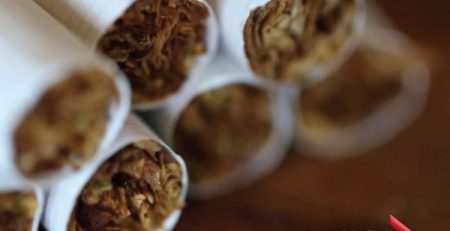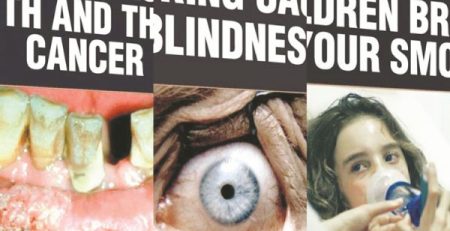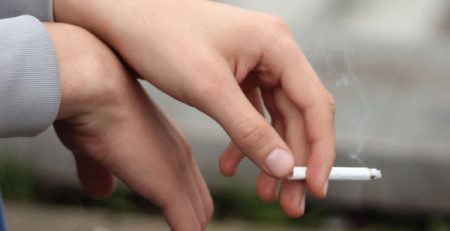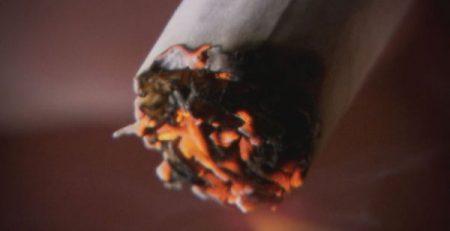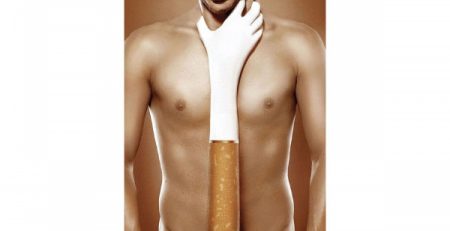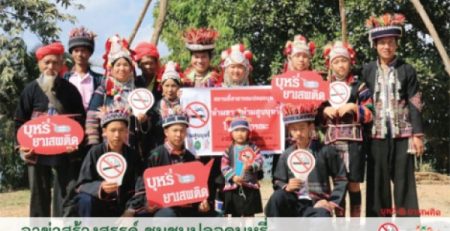Smoke – Free Homes Help to Reduce Risks of Smoking Addiction in Children
Press Release: Tobacco Research Control and Knowledge Management Center (TRC) Date: 6 January 2014 Release date: For Immediate Release Smoke – Free Homes Help to Reduce Risks of Smoking Addiction in Children
Tobacco Research Control and Knowledge Management Center (TRC) along with the Institute of Population and Social Research, Mahidol University, Queen Sirikit National Institute of Children Health, and Action on Smoking and Health Foundation (ASH Thailand) supported by Thai Health Promotion Foundation (ThaiHealth) held a dialogue titled:Smoke Free homes help to reduce risks of smoking addiction in children at the Sukosol Bangkok Hotel.
Prof. Dr. Prakit Vathesatogkit, the Executive Secretary of ASH Thailand said that cigarette smoke is very harmful to non smokers. Research results published in 2011 revealed that the worldwide number of people who lost their lives due to exposure to cigarette smoke in 2004 was over 600,000. This number included children aged younger than 5 (165,000) who lost their lives caused by lung infections and diseases, and the rest were female (281,000) and male adults (156,000). Moreover, research results also indicated that it is likely that adolescents who have exposure to secondhand smoke are at higher risk of becoming cigarette addicts than those without exposure to secondhand smoke. According to the smoking survey of Thai adults aged over15 in 2011, 11.5 million non smokers are exposed to second hand smoke in their homes. For this reason, campaigns have been launched for Smoke free homes because there is no legislation to control smoking in homes.
Assoc. Prof. Dr. Bupha Sirirassamee, head of the research project, the International Tobacco Control Policy Evaluation (ITC) Project, Thailand, from the Population and Social Research Institute, Mahidol University revealed survey results from 1,000 adolescents living in various parts of Thailand during 2005 2011 as: (1) The number of adolescents living in homes with smoke – free rules increased from 28% (2005) to 68% (2011). The information analyzed in 2011 showed that the number of adolescents living in homes with rules banning smoking was higher than the number living in homes with smokers, 84% versus 16%. For homes not smoke – free, survey results indicated that the portion of non adolescent smokers was slightly lower than the number of adolescent smokers.
Miss Teeranuch Kongkaew, a researcher of the ITC project, pointed out that homes having rules banning smoking in all areas are able to protect adolescents from smoking. Research results also found that adolescents living in homes having rules banning smoking (79%) indicated that they will not smoke in the future, and only 2% indicted that they will definitely smoke. For adolescents living in homes without a rules banning smoking, 40% indicated that they will not smoke in future, and 9% indicted that they will definitely smoke.
Besides, Assoc. Prof., Dr. Tavima Siriratsami, deputy of the ITC project, also analyzed smoking risk factors affecting the health of adolescents. The results of this analysis indicated that homes without a rule banning smoking have 3 times the risk of adolescent smoking. At the same time, homes with only partial rules banning smoking in some areas of the household have 2 times the risk of having an adolescent smoker compared to homes with rules banning smoking in all areas.
Dr. Mukda Vongrerawong, an adjunct professor at the Queen Sirikit National Institute of Child Health (Childrens Hospital), commented about the survey results of the ABAC Poll which was conducted among 658 parents at the Queen Sirikit National Institute of Child Health in 2008 and included parents opinions about cigarettes. The survey results showed that the number of smoking parents was 63.4% with 82% of these smokers smoking in the home, and with 35% saying they saw their children imitating smoking behavior. Less than half of parents are not concerned about diseases happening to their children caused by secondhand smoke exposure. Examples of diseases in children caused by secondhand smoke exposure include increased fevers (37%), respiratory infection (51.8%), Asthma (53.8%), Otitis (17.4%), and sudden infant death syndrome (SIDS) (17%). In addition, Assoc. Prof. Dr. Naowarat Charoenkha found that children under 5 are 3.82 times more likely to get lower respiratory diseases through family members who smoke while holding, playing with, and feeding their children. Besides, a study conducted by Dr. Wanaporn Anuntasaree from Prince of Songkhla University also reveals that many children among 725 children one year old had secondhand smoke exposure in their homes with 40.7% of them with cotinine, a nicotine metabolite in their urine.
Having concern about the harms of cigarettes and cigarette smoke, the Queen Sirikit National Institute of Child Health along with the Action on Smoking and Health Foundation (ASH Thailand) established a campaign project for smoke free homes aiming to help Thai people to change behavior by having non – smoking homes and reducing the dangers from cigarette smoke exposure in the home. Activities in this project are to: (1) provide and encourage smokers to quit smoking, (2) train nurses who work for both inpatient and outpatient departments to know how to evaluate, provide knowledge, and consult for quitting smoking to patients, (3) give free information to families having children and smokers, (4) have a system to inform and advise smokers of access to quit smoking clinics, and (5) have a monitoring system to evaluate success of the project. For the first year of the project, results showed that 3.43% of smokers were able to quit smoking, 40.57% stopped smoking at home, and 56.02% showed no behavior change. The project institutions expanded this project to become a network of smoke free homes which has more than 7 institutions participating in this network. They include: Mettapracharak Hospital, Charoenkrung Pracharak Hospital, Ban Pong Hospital, Chao Phya Abhaibhubejhr Hospital, Nakon Sawan Public Health Centers, Phitsanulok Hospital, and Maharaj Nakhon Si Thammarat Hospital. These network hospitals are sucessful in effectively driving the project of Smoke free homes. For the Queen Sirikit National Institute of Child Health, the information from 2009 2011 indicated that the number of smokers was 5,293 people, 42.2% of this number smoked at home, 30.4% changedsmoking behavior to smoke outside, 17.5% reduced smoking, and 9.9% had no behavior change.
Therefore, to reduce smoking among children and adolescents which prevents them from smoking in the future should emphasize providing knowledge to parents or guardians about health impacts to their children caused by smoking and being non smoking models as parents or guardians through the campaign for smoke free homes aiming to foster healthy Thai children, said Dr. Mukda.
Reference:
Worldwide burden of disease from exposure to secondhand smoke: a retrospective analysis of data from 192 counties: The Lancet: 2011;377:139-146
Evaluating the Effectiveness of Smoke-Free Policies, Vol.13 Lyon, France 2008
Global Adult Tobacco Survey: Thailand Report, 2011, Section 6-2, Secondhand smoke
Tobacco Control Research and Knowledge Management Center (TRC)
Supported by: Thai Health Promotion Foundation (ThaiHealth)
Coordinator: Haris Taweewatana, Tel., 0-2354-5346, 089-6627-917, Fax: 0-2354-5347 E-mail: haris@trc.or.th


